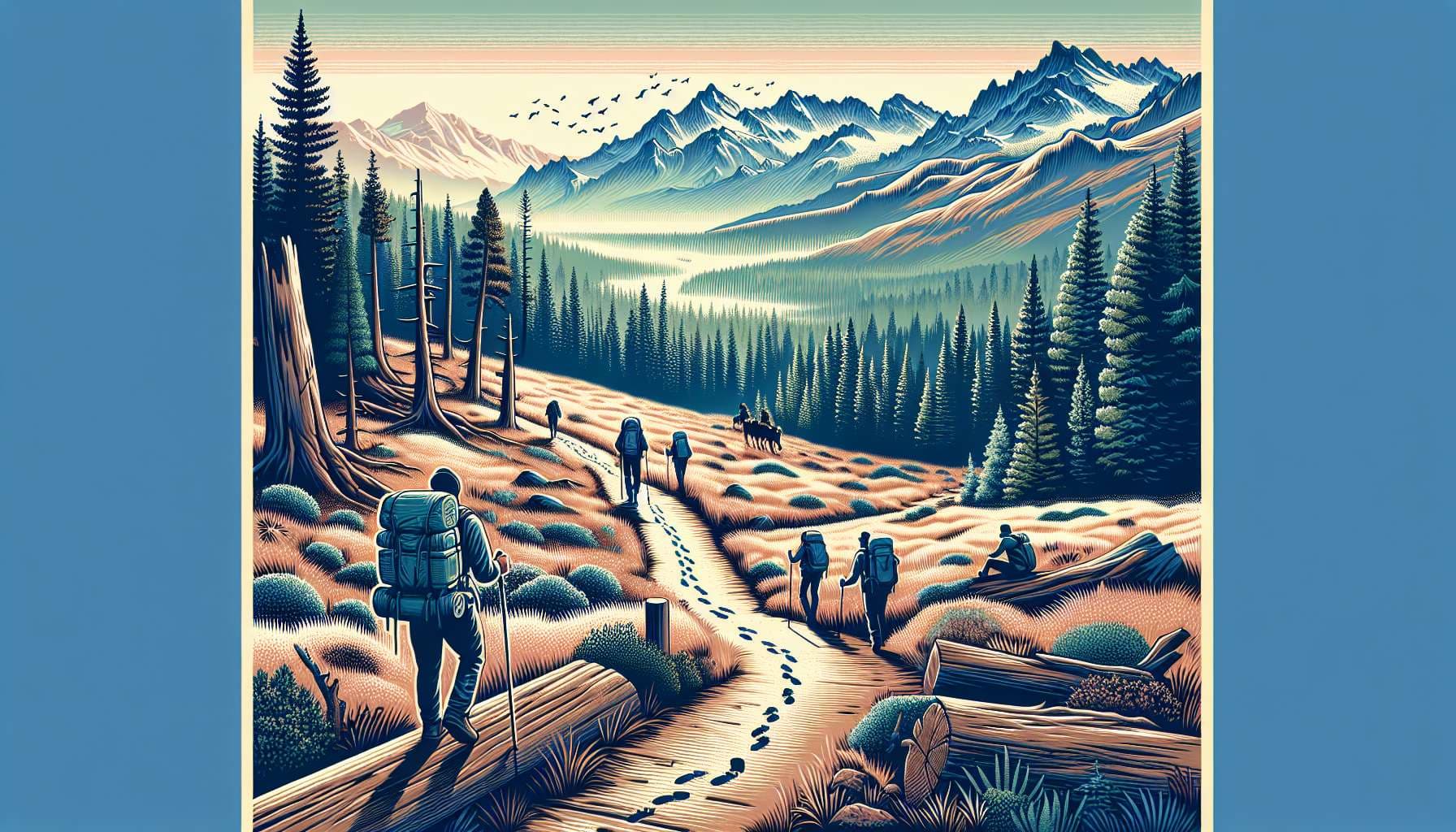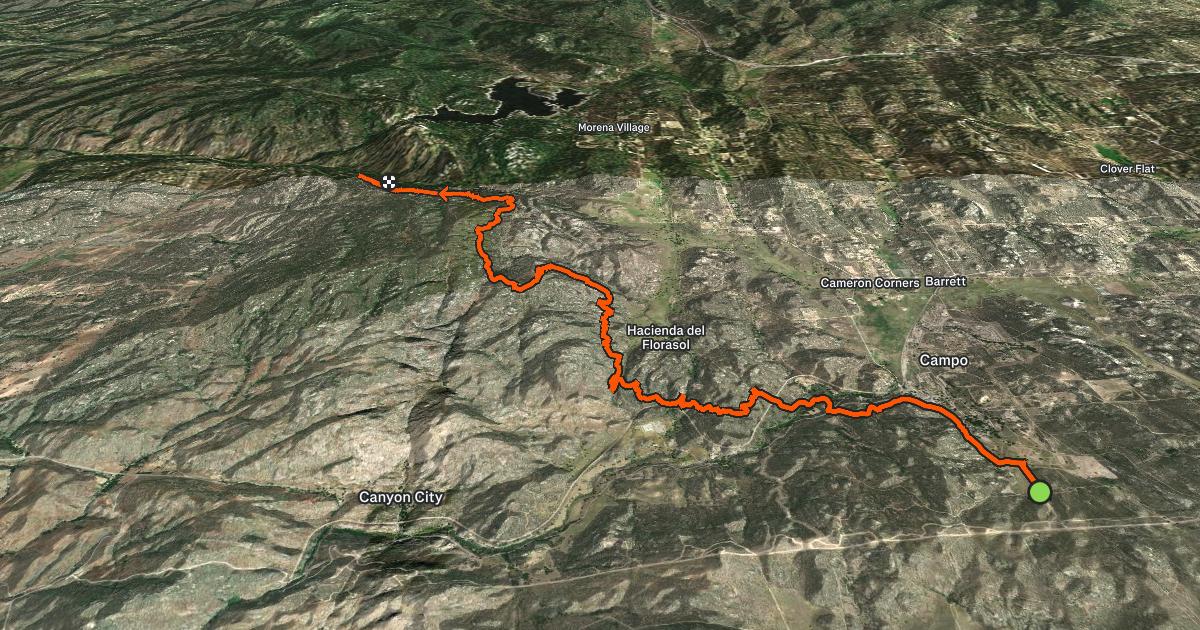
I'm attempting to hike the entire 2650 miles of the Pacific Crest Trail, from Mexico to Canada, starting on May 11. How far will I make it, in miles, before finishing or quitting?
Some technicalities:
- It is likely I will skip a non-zero number of miles, due to things like part of the trail being closed for fires, or hiking an alternate path, in order to reach a place I can resupply. For the purposes of this market, I will have made it as far as I was able to go without quitting or skipping more than 5% or 50 miles (whichever is greater)
- Any hiking I do after December 31, 2024 or after I'm no longer allowed to be hiking on the trail (e.g. if H5N1 shuts everything down) does not count.
- I will not trade on this market, after betting on myself finishing the entire thing (2650 miles).
Possibly useful information:
- I have lots of backpacking experience (~200 nights, maybe?) in a wide variety of environments (Deserts, Rockies, PNW)
- I'm in reasonably good physical condition. I used to be a competitive cyclist, and in my training hikes I've been completing >15 miles, with >3000 feet of elevation gain in <5 hours, with a pack of similar weight to what I'll be carrying on the trail.
- My primary care doctor is enthusiastic for me to be doing this
- I've never hiked the PCT or any other super long trail
- I have spent less time preparing, both physically and logistically, than the typical thru hiker
- I'm not super motivated to finish, but I sometimes get pretty stubborn about finishing things even when I should probably quit (for example, my 8.5-year PhD)
- My best guesses for why I would stop without finishing are boredom, minor injuries (e.g. knee/foot pain that doesn't go away), or feeling too much urgency about getting back to working on x-risk reduction to be gone for 4-6 months.
- Here's a survey with some information to help you think about base rates: https://www.halfwayanywhere.com/trails/pacific-crest-trail/pct-hiker-survey-2022/
I will try to answer questions before I leave, but I won't be able to do much while on the trail. I'll also try to give occasional updates on my progress.
🏅 Top traders
| # | Name | Total profit |
|---|---|---|
| 1 | Ṁ438 | |
| 2 | Ṁ327 | |
| 3 | Ṁ244 | |
| 4 | Ṁ234 | |
| 5 | Ṁ214 |
People are also trading
My permit expires today, so I'm calling it now. Thanks to everyone who traded, and sorry if I gave fewer updates than desired.
If you want to see my GPS data, either for curiosity or to verify I hiked what I said I hiked, it's all on my Strava. The first day is here: https://www.strava.com/activities/11548866581 (You may need to log in to Strava to see more)
And there's some analysis of my hiking speed here: https://empiricallyspeaking.substack.com/p/hiking-speed-over-1978-kilometers
Sorry for the lack of updates on this!
I left the trail at mile 1093 (near South Lake Tahoe) on July 15. I do not plan on resuming a thru hike, and large portions of the trail in northern California and Oregon are closed due to fires, so even if I'd kept hiking, I would have hit the 5% threshold fairly quickly.
However, I'm considering going back and hiking part of the Desolation Wilderness section, which picks up where I left off. I haven't been keeping careful track of fire closures, but as far as I know it's open for now. And I'm told that, in spite of the name, it is a nice section of trail. If I do that, most likely my final tally, as far as this market is concerned, would be ~1160 miles. For what it's worth, I think it's about 1/3 to 1/4 chance I'll do that sometime this Fall.
I made it to Red’s Meadow (mile 908) this morning. I plan to leave the trail at either S Lake Tahoe (mile 1090) or possibly Truckee (mile 1160) for a family thing and I think there’s a decent chance I will not start again after, mainly because I think I will have gotten most of what I wanted out of the hike by then.
I made it to Acton (mile 444) last night. This heat wave will slow me down for the next few days, as it may not be safe to hike full days and I don’t sleep well enough during hot days to switch to hiking at night like some people do.
I’m feeling more like hiking the full trail may not be worth the time/money, but possibly it will seem more worth it once I’m out of the desert.
@meefburger And so far I’ve skipped about 2 miles: 1 from walking through Mount Laguna instead of taking the trail around, and 1 from getting picked up and dropped off at different spots along the highway when hitchhiking into Julian Anna back.
@meefburger oh nice! did you start on the 11th as planned? I love that you're updating along the way. ✨
@shankypanky Yep, I started on the 11th, though my shuttle didn’t get there until about noon, so I didn’t get a full day of hiking in.
You're starting a little late, but I think you'll be alright if you can maintain a moderately high avg mi/day. (And beware the siren call of town-day zeros and neros!)
I'm cheering you on -- good luck!
Dump of unsolicited advice:
Your total out-of-pocket cost will likely be proportional to how much time you spend in town.
Plan your town visits (errands) before arriving into town, and then try to be in and out quickly. (e.g. Start laundry & begin charging devices > shower > move clothes to dryer > grocery shop in rain clothes > change & hitch back out to trail before dusk)
If you find yourself wanting to hike more miles in a day, wake up earlier and then hike later in evening rather than trying to increase your pace per hour. More hours hiked in day > more steps per hour.
Towards the above point, dial-in your activities of daily living to be efficient, like eat snacks while moving slower instead of stopping entirely for some of your rest breaks. Set-up your camp while boiling water. Etc.
You'll have way more decent sleeping options if you're just in a bivy or on a groundsheet compared to if you're setting up a tent or tarp.
In the desert or when on snow, it's better to reduce the total amount of skin exposed to the sun rather than just using more sunscreen. Sun hoodies are great!
Evaporative cooling is incredible. When you have the opportunity, take off your shirt and dunk it in water before putting it back on.
(And once you pass Kennedy Meadows:)
Drink up at water spots and you'll be fine only carrying a liter or less of H2O at a time, at least for many stretches. (Obviously increase if dry-camping, though!)
You'll be hard-pressed to go over more than 2 or maybe 3 passes per day. Total elevation gained per day can be more limiting than total distance.
Snow conditions change throughout the day: a nice ice crust in the early morning can become a post-holing slog by the afternoon. Aspect (i.e. sun exposure) matters a lot too.
Trekking poles can (sorta) be used to self-belay instead of an ice axe. If you hear reports of the Sierras still having snow by the time you hit KM, cleats or microspikes will be far more useful than an axe.
Summer storms pass quickly in the Sierra Nevada.
"It never rains at night in the Sierras [in the summer]." -- Rain is super rare at night. Dew/condensation, heat retention, and wind are all good reasons to sometimes set up a shelter anyway.
By NorCal or August or so, I'd recommend carrying a KN95 due to smoke risk.
Have fun and HYOH!
(Also, I'd be happy to offer feedback on your gear list if you want 😊 )
@shankypanky My permit is valid until September 30, a date I chose somewhat arbitrarily, since I can get it changed if needed. I don’t have any work or other obligations, and I have the budget to go longer if needed (and permitted by weather).
